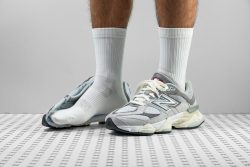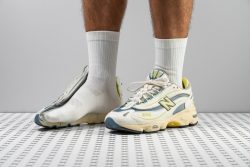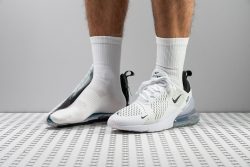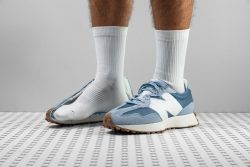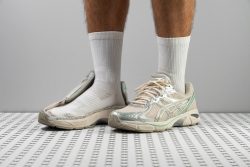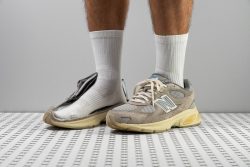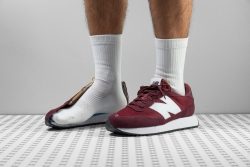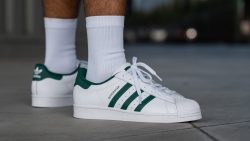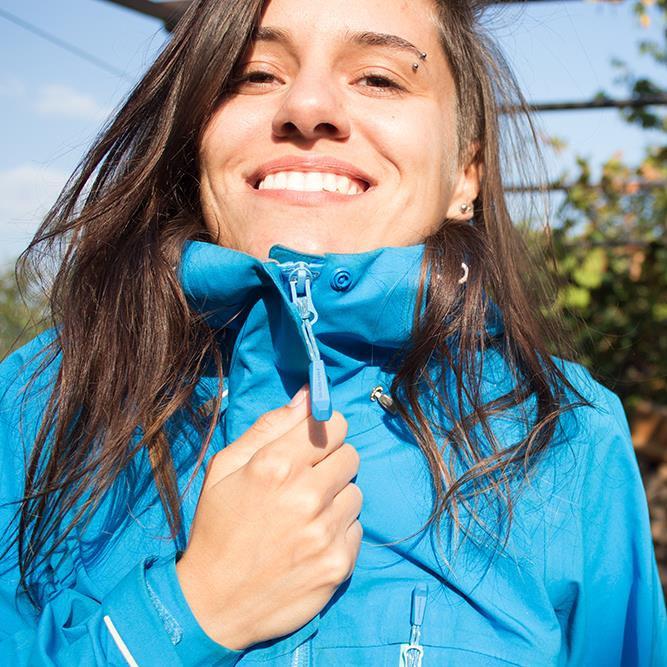7 Best Sneakers For Shin Splints in 2025
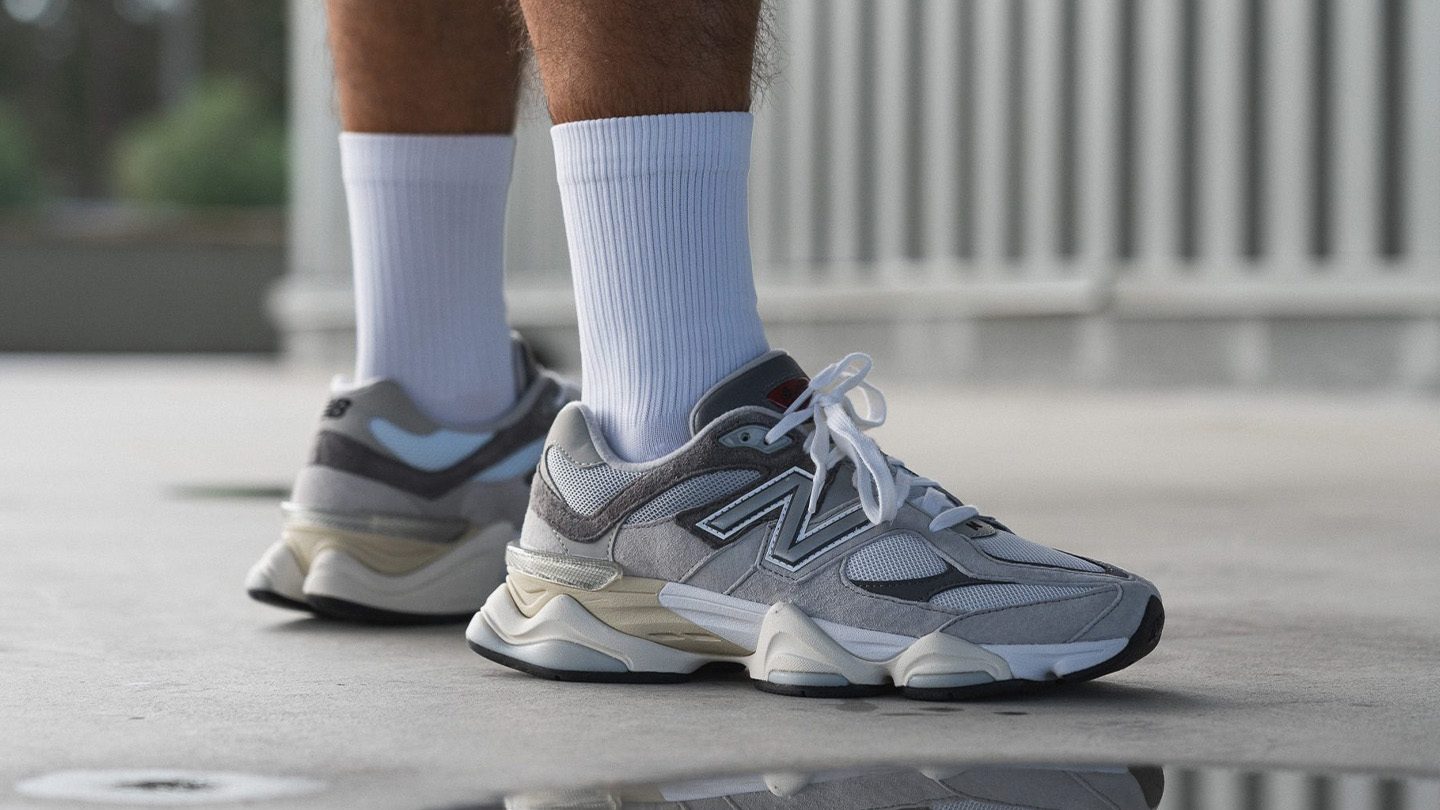
We buy shoes ourselves. We earn commissions when you buy through us, at no extra cost. Why trust us
Shin splints are a common overuse injury, and, of course, we have experienced them. The best thing about working with footwear in our lab is that we can check our personal experience against the lab data. That's exactly what we did and why we can present all our findings in this guide.
We also selected the top picks in different categories so that you don't have to open tons of tabs to find an answer and for faster navigation. If you're curious about which features are needed when one is dealing with shin splints and how we measure each and every one, the whole guide awaits you.
How we test sneakers for shin splints
Having an independent shoe testing lab means having standardized tests and completely transparent and objective processes. Here's what you should know about our tests:
- All the tests are standardized, which means that each sneaker is tested under the same conditions. Just because one sneaker is made of knit does not mean we will be gentler than when working with a leather one. You can read more about our tests on the Methodology page.
- We update our tests as needed, which also means we buy new machines to provide even more data and an in-depth understanding of why certain things work better or worse for people.
- Every sneaker that has been tested in our lab was purchased with our own money. We don't have contracts with the brands. Our reviews are honest and unbiased, and we let the data speak for itself.
- Based on both our field testing and lab testing, we are able to pick the select few that have proven to be better than the rest. We do that and publish those shoes under top picks in our guides.
Best sneakers for shin splints overall
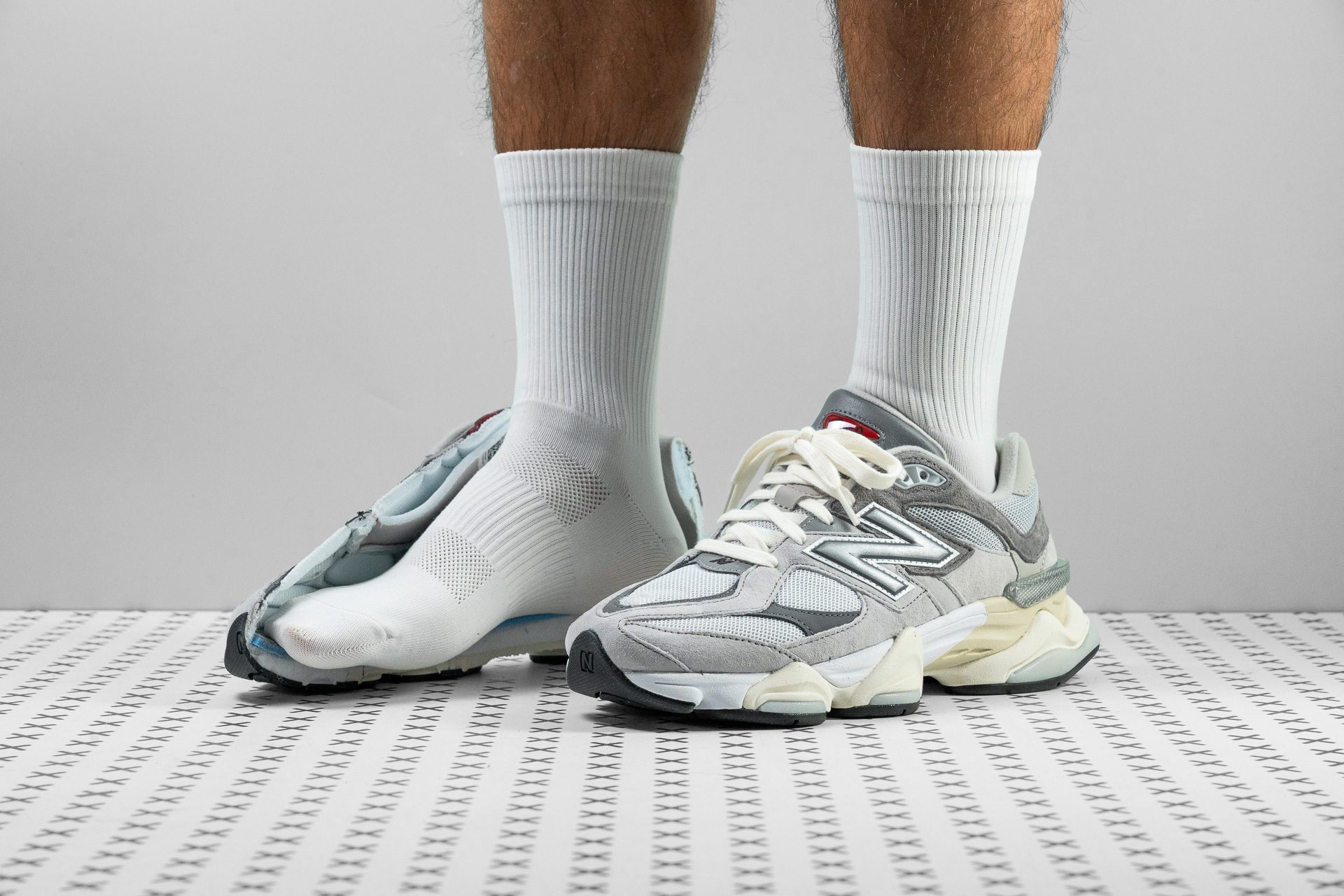











































What makes it the best?
New Balance 9060 is unrealistically comfortable and it offers a platform that's wide and stable. With its generous cushioning, high heel drop, and robust design, we loved it so much we had to make it the best overall sneaker for shin splints!
At the heel, we measured 37.3 mm. This is around 7 mm higher than the average sneaker and 2.3 mm more than we set as the lower limit for shin splints. Those 37.3 mm are not there just for the looks, although we absolutely love the design as well! When we stuck the durometer needle into the midsole, we got a reading of 19.4. No wonder the 9060 is so comfortable, its platform is 33.6% softer than the average sneaker!
When we tried to twist the sneaker, we got a rating of 4/5 for torsional rigidity. For shin splints, we want at least 3, so again, the New Balance 9060 scores high! And its heel drop turned out to be 11.3 mm, which is great for shin splints. We want to offload the lower legs as much as possible, and high heel drop does exactly that. It utilizes higher leg muscles more which is why the 9060 feels so good when you're experiencing shin splints.
If you needed a cherry on top, here it is: we burned the suede overlays and realized it was real suede! It burns evenly, does not burst into flames, smells of burnt animal hair and does not become sticky. Great!
If your toes often need more room in the toebox, stay away from the New Balance 9060. Its toebox is narrow (more than 3 mm narrower than the average) and will then cramp your toes.
Pros
- Comfortable and cushioned for all-day wear
- Excellent craftsmanship
- Quite heavy-duty
- Dope aesthetics
- Looks better in person
- Premium-grade materials
- Stable platform
- Great grip on dry and wet
Cons
- Limited color options
- Squeaks
- A tad warm
Sneakers for shin splints with the best shock absorption
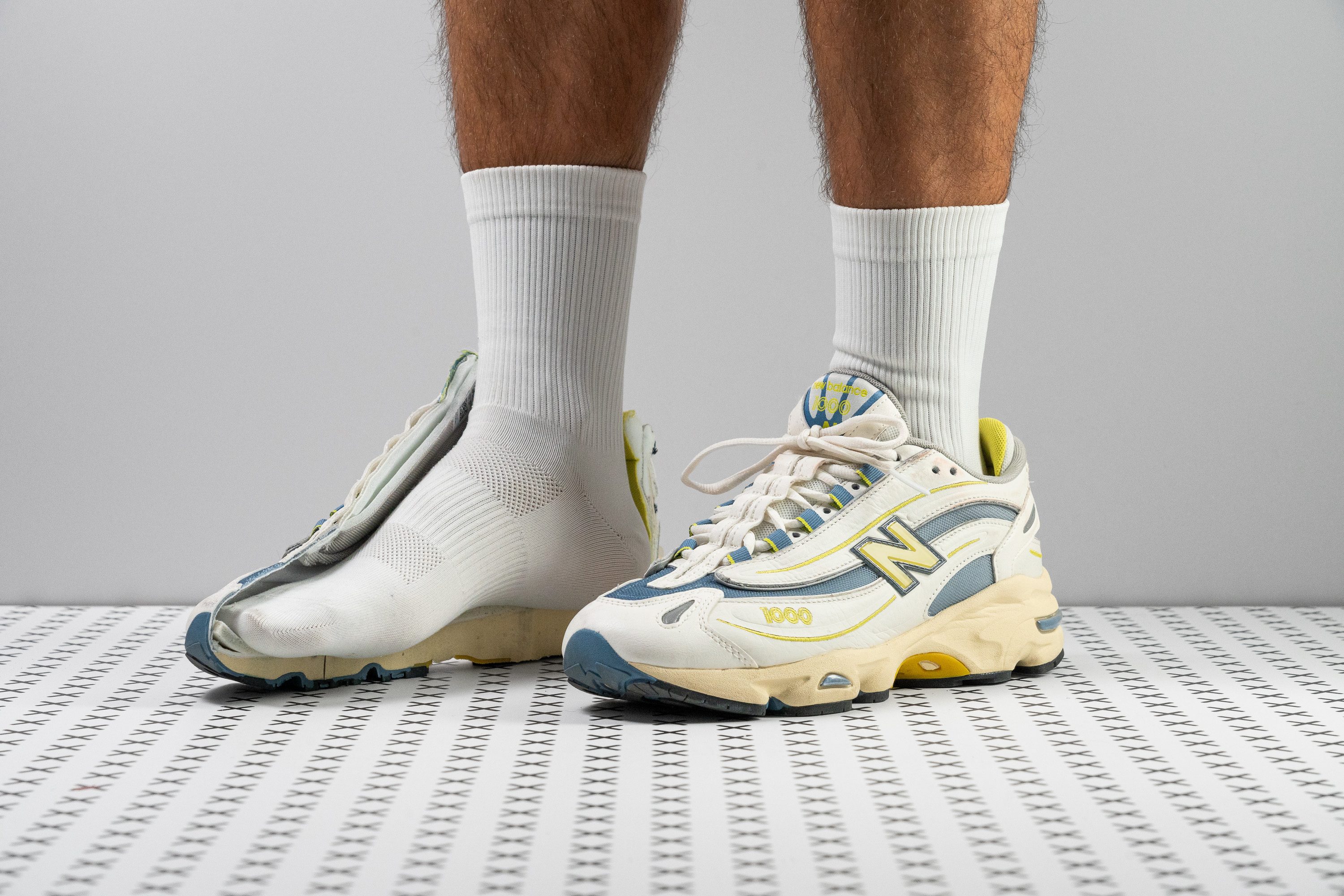
























































What makes it the best?
The New Balance 1000 is our #1 pick for shock absorption among shin splint sneakers tested in the lab, and here's why: it features remarkable cushioning, at 13.2 oz (373g), it does not weigh us down after hours of walking in it, and its platform is wide and super stable.
For shin splints, our criteria include high-impact protection in the heel and a minimum stack height of 30 mm. New Balance 1000 passes these qualities with flying colors, with its top-tier 122 SA result in our shock absorption test and a 36.5 mm high platform.
What also works wonders for shin splints is a high heel drop, and here, we found 11.3 mm. As the heel drop grows, the muscles that are utilized the most while walking are also set higher up the legs. This is a great feature to rely on when we don't want to overwork the shin bones and the surrounding tissues.
The New Balance 1000 features the Stability Web, which enhances a surefooted sensation. Thanks to its wide 111.9/90.4 mm platform and upper overlays, the lockdown and the lateral stability are 10/10.
While the outsole is durable, the toebox and the heel padding area (that you may rub with your protruding heel bone or damage prematurely if not using a shoe horn) are not. If the overall durability is your priority, we recommend looking for a different pair.
Pros
- Really comfortable for all-day wear
- Soft and protective cushioning
- Great lockdown and surefootness
- Nice stability (wide platform)
- Lightweight on foot but with padded interiors
- Incredibly breathable
- Real suede
- Super stylish
- Trendy retro vibe
- Great traction for city streets
Cons
- Frail mesh components
- Tongue might be too long for some
Sneakers for shin splints with the best breathability
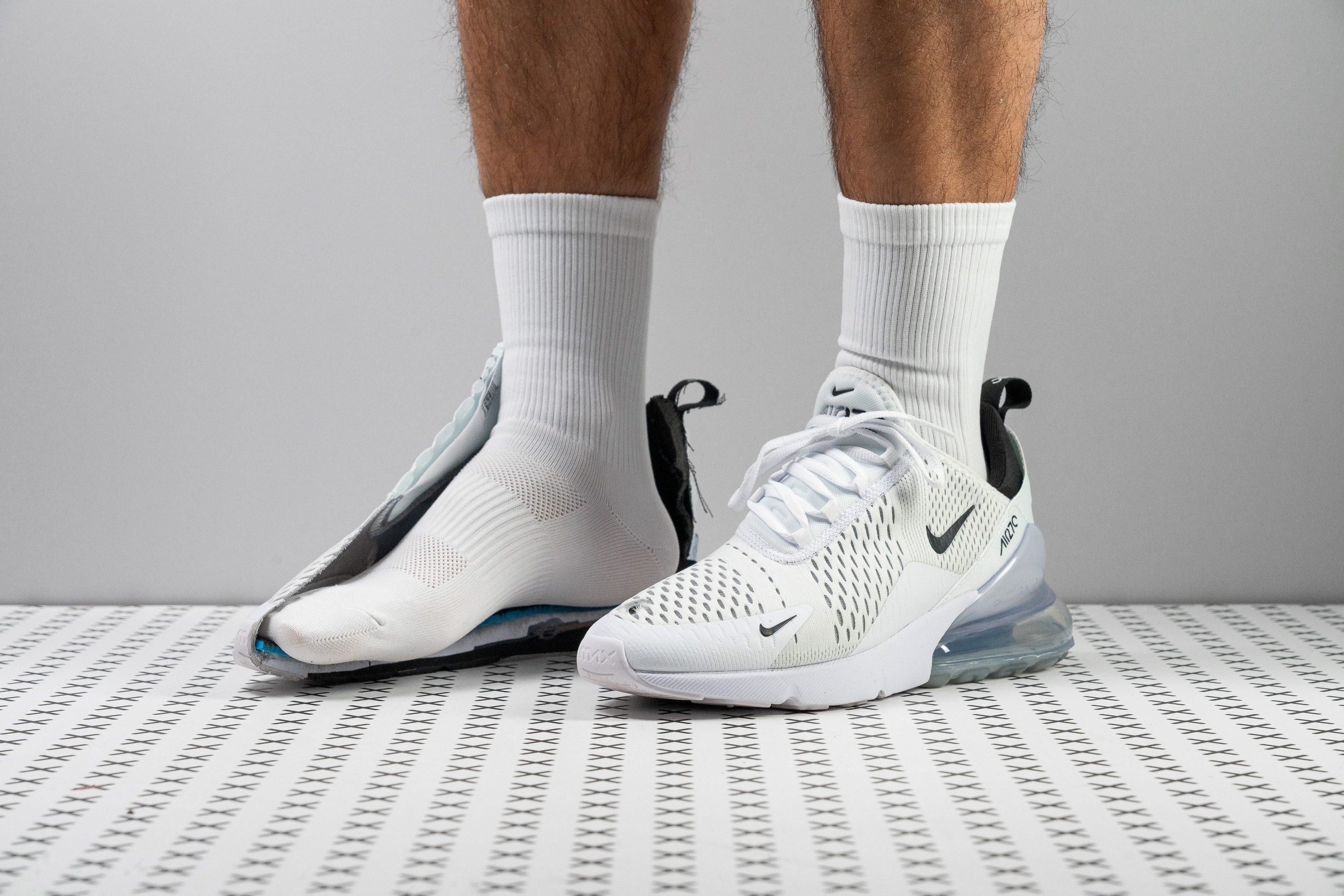










































What makes it the best?
Nike Air Max 270 scored a perfect 5/5 on our breathability test. We pumped the smoke into the toebox and watched it come out quickly and evenly. Actually, we knew it was gonna be like this when we looked at the upper against a flashlight, the light shone through. We did not stop there, so we looked at the upper under the microscope. While it looks like it's woven material only, we also see gaps covered with mesh, and those gaps make the 270 so breathable! The woven segments are also loose and not packed tightly, which helps get to that perfect 5/5 breathability score.
This sneaker sits on one of the steepest platforms we had in our lab among sneakers! With a heel drop of 16.1 mm (average is 11.2 mm), you don't have to worry that your shins will be overworked. High heel drop activates high leg muscles and given the extreme height of this heel drop, we know the muscles around the hips will be working a lot!
Another thing we prioritize in sneakers for shin splints is a wide platform. We want all the stability and support we can get! Nike Air Max 270 delivers with 92.1 mm of platform width at the heel, which is almost 1cm wider than the average!
When we tested this sneaker using a grip-testing machine, we discovered it scored low, 0.34. This is 19% worse than the average and it means the Air Max 270 is slippery on wet surfaces. If you plan to use a sneaker in wet weather a lot, skip this one.
Pros
- All-day comfort
- Fun and springy ride
- Incredibly lightweight
- Flexible structure
- Practical booty-like construction
- Perfect for active people
- Cool Nike Air technology
- Trendy futuristic vibe
Cons
- Upper lacks durability
- Not for people with wide feet
- Can be slippery on wet
Sneakers for shin splints with the best traction
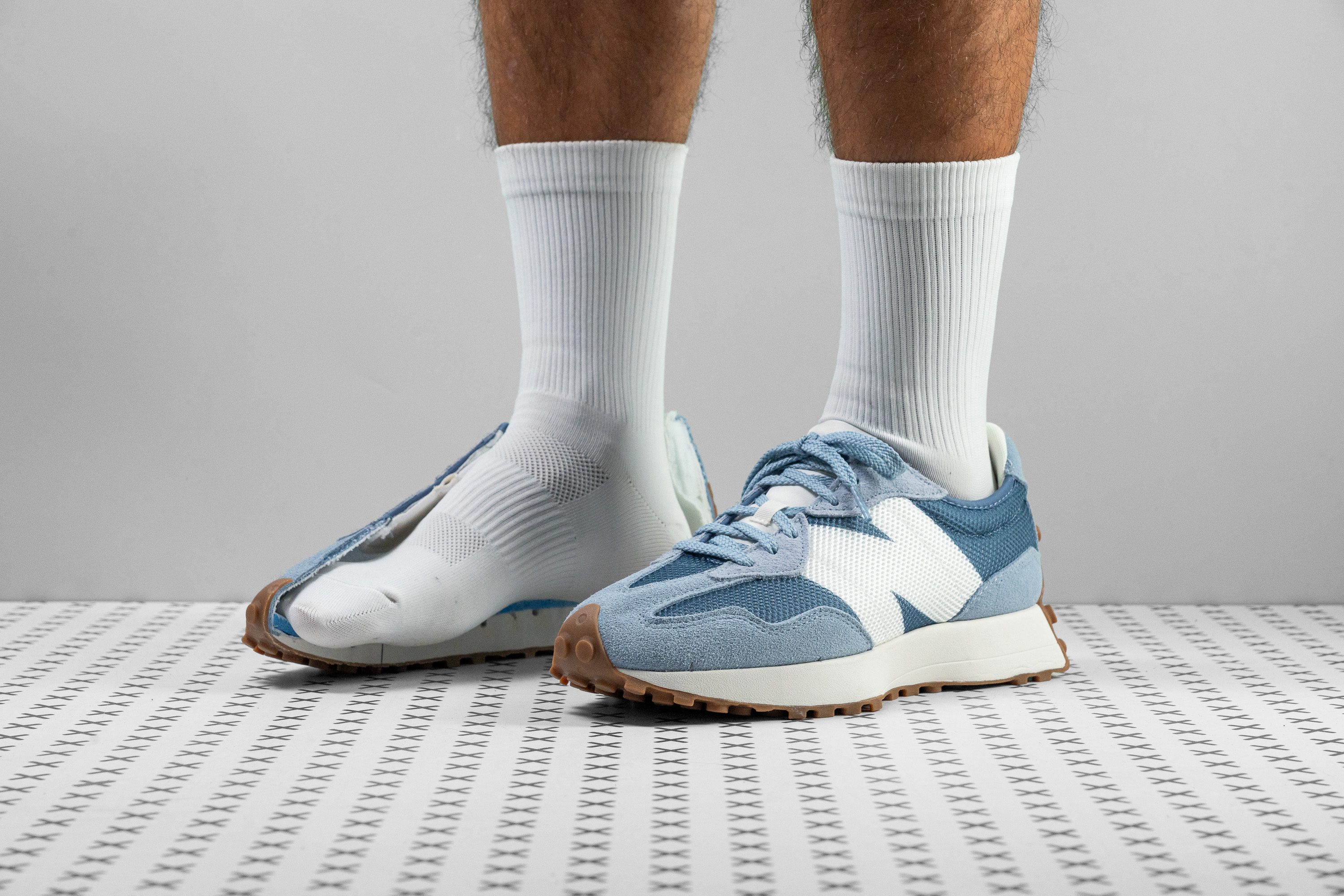














































What makes it the best?
When talking about shin splints, we focus on the stability and cushioning. But, even on the widest platforms, we experience instability when the outsole is simply not grippy enough. That's when New Balance 327 enters the scene, delivering everything we want in a sneaker for shin splints, offering the best traction as an added boost!
We performed our standardized test against wet concrete, and the machine showed a high friction score of 0.51. This makes the NB 327 21.4% grippier than the average sneaker. We can attest to this in our strolls because the shoe never failed us, whether on wet or dry surfaces.
Given that the shin splints cause pain in the lower legs, we try to "save" them as much as possible. Cushioned sneakers help a lot, and NB 327 does not disappoint! With a heel stack height of 35.0 mm and a steep 10.0 mm drop, this setup is a dream for those with lower leg issues.
Not just that, but the platform is also wide. At 90.6 mm, it's 6.8 mm wider than the average, enhancing well-planted footing. The combination of a wide platform and a torsionally rigid midsole (scored 4 out of 5 in our assessment) makes it feel exceptionally stable. No wobbles at all!
Those who often damage heel paddings from rear rubs or repetitive wear-on and offs should note that the material disintegrated easily in our Dremel test. If sturdy heel padding is a must, we advise against getting this pair.
Pros
- Fashionably sporty
- Excellent impact protection
- Stable and planted platform
- Lightweight and comfortable
- Above average breathability
- Excellent grip
- Suitable for driving
- Budget-friendly
Cons
- Not suitable for wide feet
- Not as supportive as other NB sneakers
Sneakers for shin splints with the best stability
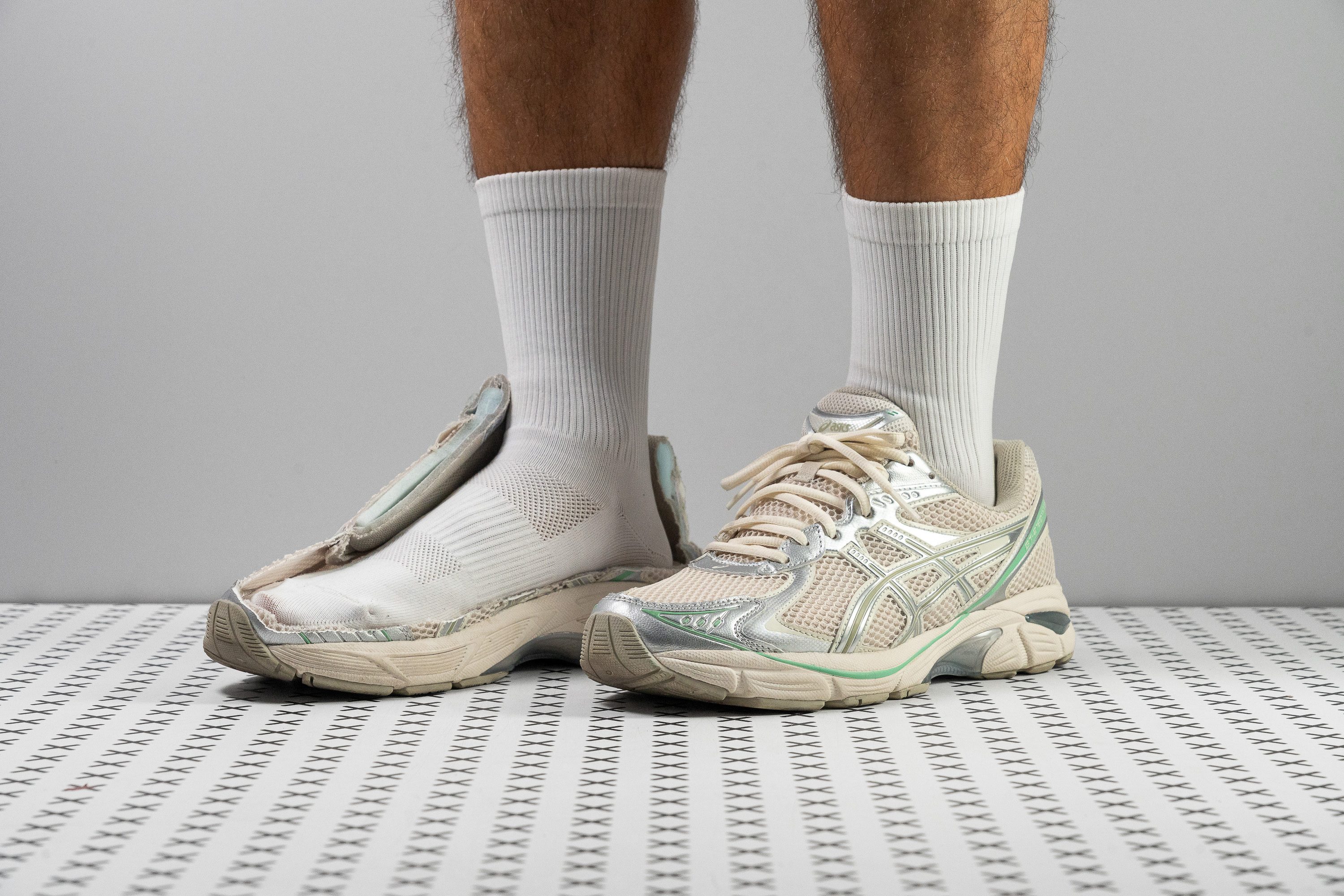









































What makes it the best?
We love how confident our footing felt during our walks in the ASICS GT 2160. Our lab work reveals an excellent combination of width and rigidity, making it our best stability sneaker for those dealing with shin splints. It won’t cause any additional muscle strain with its highly cushioned ride and lightweight feel.
Each step is well-planted, care of the wide and structured base that keeps our feet centered inside the shoe. Using our caliper, we confirmed it is indeed broad at 114.0/108.8 mm compared to the 108.8/83.8 mm average. In terms of torsional rigidity, we rated it a high 4/5 in our assessment, meaning it’s hard to twist our ankles.
Repetitive landings on the road didn’t feel harsh, thanks to the stacked and shock-absorbing heel recording above-average measurements of 31.1 mm and 105 SA in our lab tests. The latter result means it offers 19.3% better impact protection than average.
Even during a long day, our feet felt fresh since the shoe is light and non-resistant to foot-bending. Our scales reveal it’s only 12.0 oz (340g), 13.0% below average. Meanwhile, it emerged 32.8% more bendable than average in our flex test, proving its comfort for daily use.
Unfortunately, the upper is frail and vulnerable to premature wear. If this is a dealbreaker, we recommend going for a more durable shoe.
Pros
- Very stable and supportive
- Super lightweight structure
- Breathable design
- Great for all-day wear
- GEL technology
- Durable outsole
- Trendy retro sporty clean style
Cons
- Upper lacks durability
- Not the best for running
Best cold-weather sneakers for shin splints
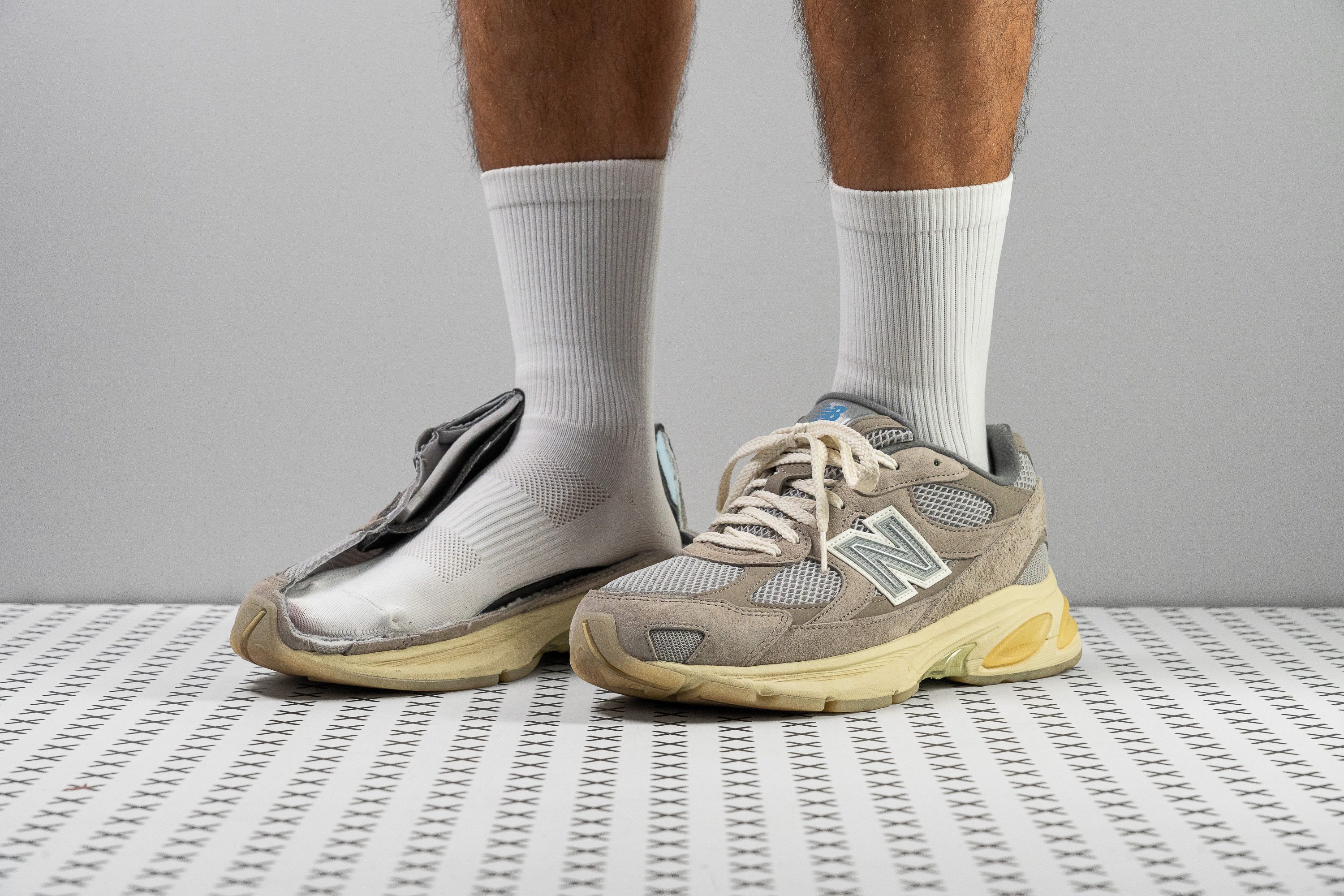









































What makes it the best?
With its padded interiors, the New Balance 2010 kept us warm and cozy during wear tests, making it our best shin splints sneaker for cold weather. It relieved our muscles with its incredibly plush midsole, which we confirmed in the lab, while its wide base ensures each step lands safe and sound through its wide base.
The upper has double layers, which completely block off the air. In our smoke test, nothing could escape, so we rated it with the lowest 1/5 ventilation score, making it ideal for cold temperatures.
The generous cushioning made us feel at home. It measures an above-average 35.7/24.7 mm, offering exceptional impact protection with its high 121 SA score. With a shock absorption rate so high, we can walk all day long with zero pain.
Having well-planted landings is essential to avoid triggering any additional muscle strain. The wide 115.9/95.7 mm base helped us find our footing and balance well.
However, note that the toebox runs slightly narrow, so we recommend those with broad or square-shaped feet to find a more accommodating sneaker.
Pros
- Very comfortable
- High-quality materials
- Super durable outsole
- Best impact protection for your feet
- Incredibly high energy return for sneakers
- Fairly stable
- Authentic leather and suede
- Cool retro style
- Lots of reflective elements
Cons
- Not breathable
- Might be too narrow for some
Best budget sneakers for shin splints
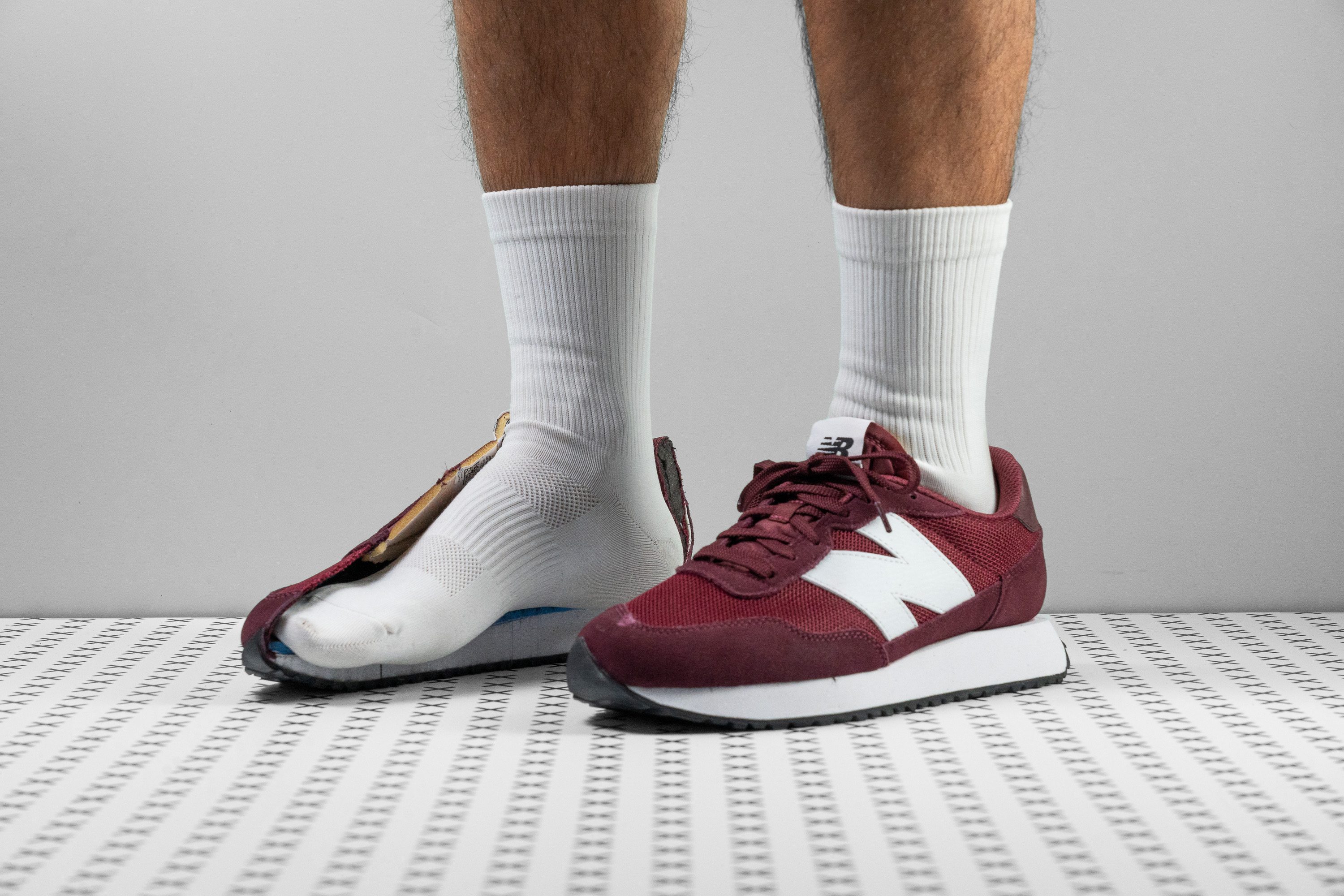






















































What makes it the best?
The New Balance 237 goes all out on comfort, delivering a shock-reducing ride with its generous cushioning. It further reduces fatigue with its minimal build, while delivering stability with its broad heel, which we verified in the lab. We were so surprised to find it only costs $75! At a 34.8% discount vs. the average sneaker, it’s our best budget pick in the shin splints sneakers category.
No matter how long we walked around the city, our muscles never felt too bruised. We measured the stack to be an above-average 35.2/25.2 mm, with the rear offering a high level of shock absorption, proven by its 109 SA result. With 23.9% better protection than average, it reduces the load on our ankles and shins.
Our feet also feel well-aligned with every landing. We figured out why when we measured the heel to be a massive 101.7 mm. With 17.9 mm extra width compared to the average, we have more room to find our balance and remain within the sneaker.
Despite its generous dimensions, New Balance 237 manages to keep its weight low at 11.3 oz (319g). Being 18.4% lighter than average, it never felt like a burden on foot.
A small nitpick is that the material of the shoe tends to wrinkle. If this aesthetic issue could be a problem, we recommend skipping this pair.
Pros
- Super affordable
- Very durable materials
- Breathable and ready for the summer
- Out-of-box comfortable
- Impressive traction on dry and wet
- Retro vibes and effortlessly chic
Cons
- Firm dead-feeling sole
- Materials wrinkle
What are shin splints?
Shin splints are caused by the repetitive stress on the shin bone and surrounding tissues. This repetitive stress causes tenderness and pain at the front of the lower legs on the inner side (posterior/medial shin splints). Anterior shin splints are less common.
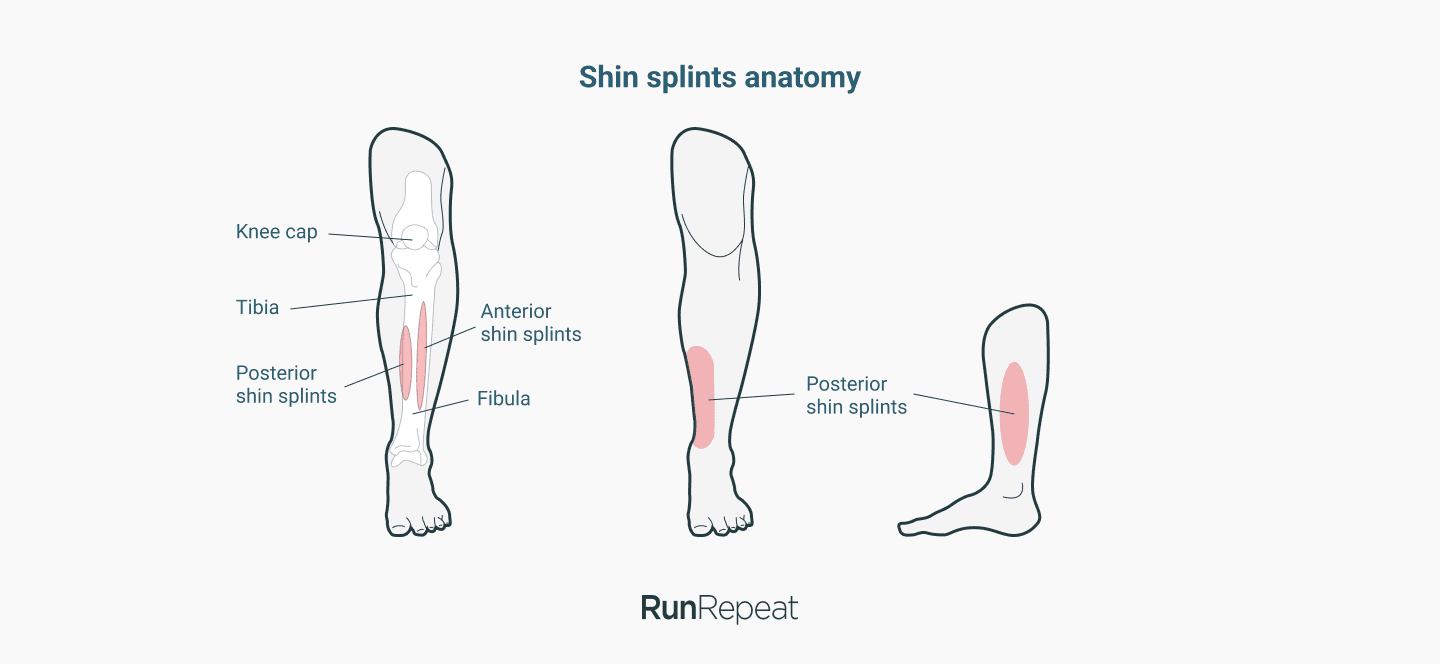
The shin bone is called the tibia, so shin splints are known as medial tibial stress syndrome. This repetitive stress often comes from running, increasing the mileage significantly, harder exercises, and so on.
The pain often goes away when the repetitive activity is stopped. As always, we recommend seeing a specialist for a proper diagnosis, especially if the pain becomes chronic. Specialists may give a more in-depth understanding of what's happening and conclude that maybe it was the wrong footwear, overpronation, or some imbalance/compensation that triggered the shin splints.
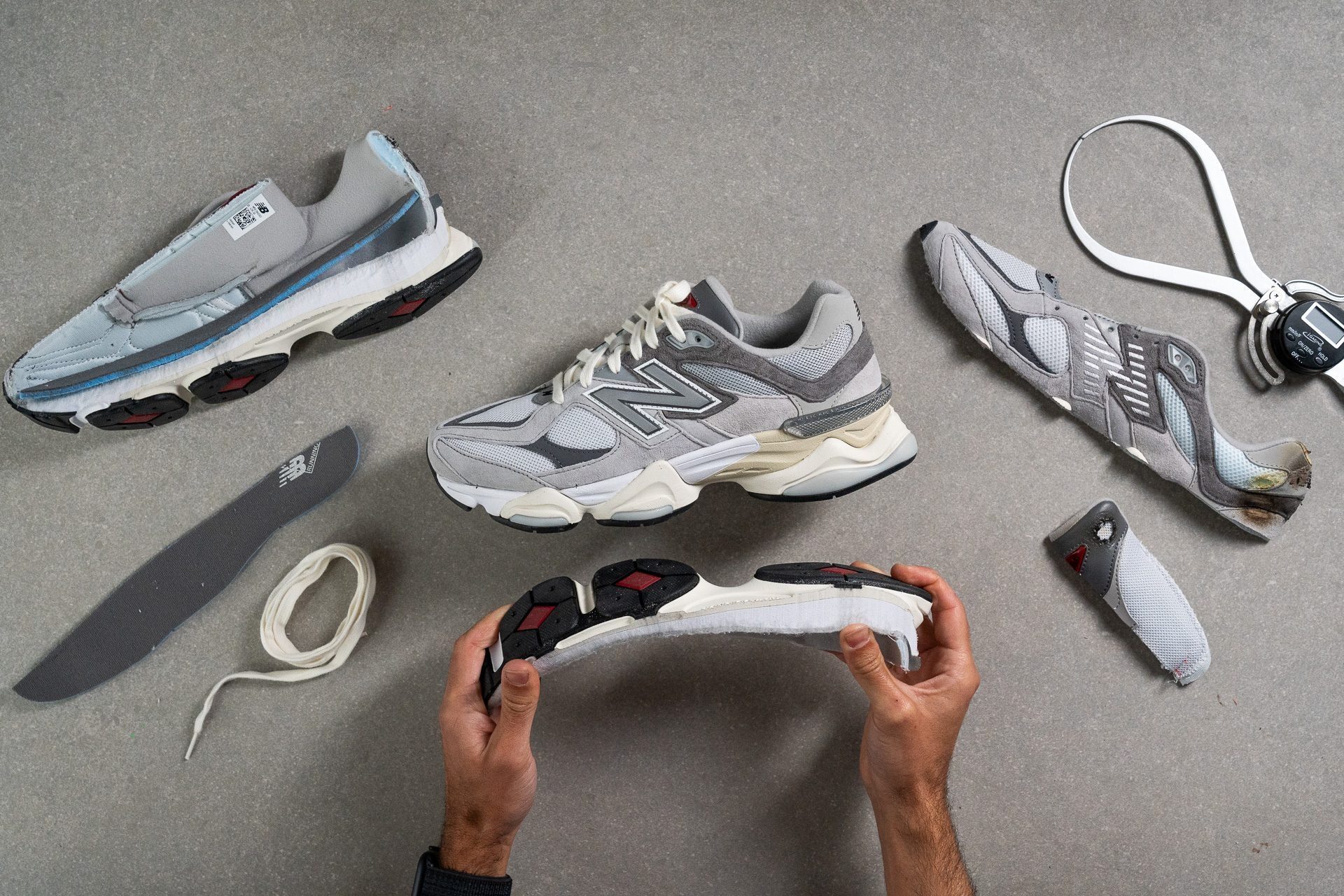
In our lab, we cut all sneakers for shin splints into pieces to perform all the standardized tests.
4 features to look for in sneakers for shin splints
There are 3 sneaker features we recommend you look for if you’re dealing with shin splints. This list comes from our extensive field- and lab-testing experience. We found this set of features to work because they help on multiple fronts: lowering the impact forces by providing a cushioned platform to land on, making the platform stable to reduce unnecessary muscle work, and utilizing muscles above the shin bone thanks to a higher heel drop.
- Good shock absorption: 100 SA or more. This will give you good midsole below your feet to absorb shock. It’s also a big plus for comfort!
- Torsionally rigid platforms. This adds stability to the platform, and when feet are not wobbling, they are not overworking the already overused lower-leg muscles. We recommend platforms that scored 3 or more on our torsional rigidity assessment.
- Wide platforms and, by wide, we mean at least 90 mm at the heel. We measure the width of every sneaker midsole that goes through our lab, so you are covered. This extra width ensures planted landings, which is much needed for those struggling with whin splints.
Below, we will dig deep into all of these features and one more: heel-to-toe drop.
Look for cushioned sneakers with great shock absorption
Cushioning comes in wildly different options, from very flat and minimalist sneakers, to high-off-the-ground chunky ones. However, it's not the stack height that matters the most for shin splints, but shock absorption. That's because shin splints happened due to too much stress and midsoles with good shock absorption lower the stress that's sent to the legs.
Testing the shock absorption of sneakers for shin splints
The midsole's job is to absorb the impact forces that appear at the landing and the higher the shock absorption, the lower the forces sent to the legs, because the midsole handles the majority of them. The easiest way to understand this is to think about fast-paced walking barefoot and in cushioned sneakers: when you're barefoot, your heel starts hurting almost immediately, and you try to land softer or even on your forefoot, to "soften the blow". In cushioned sneakers, the midsole handles the impact forces and your feet get beaten/tired less.
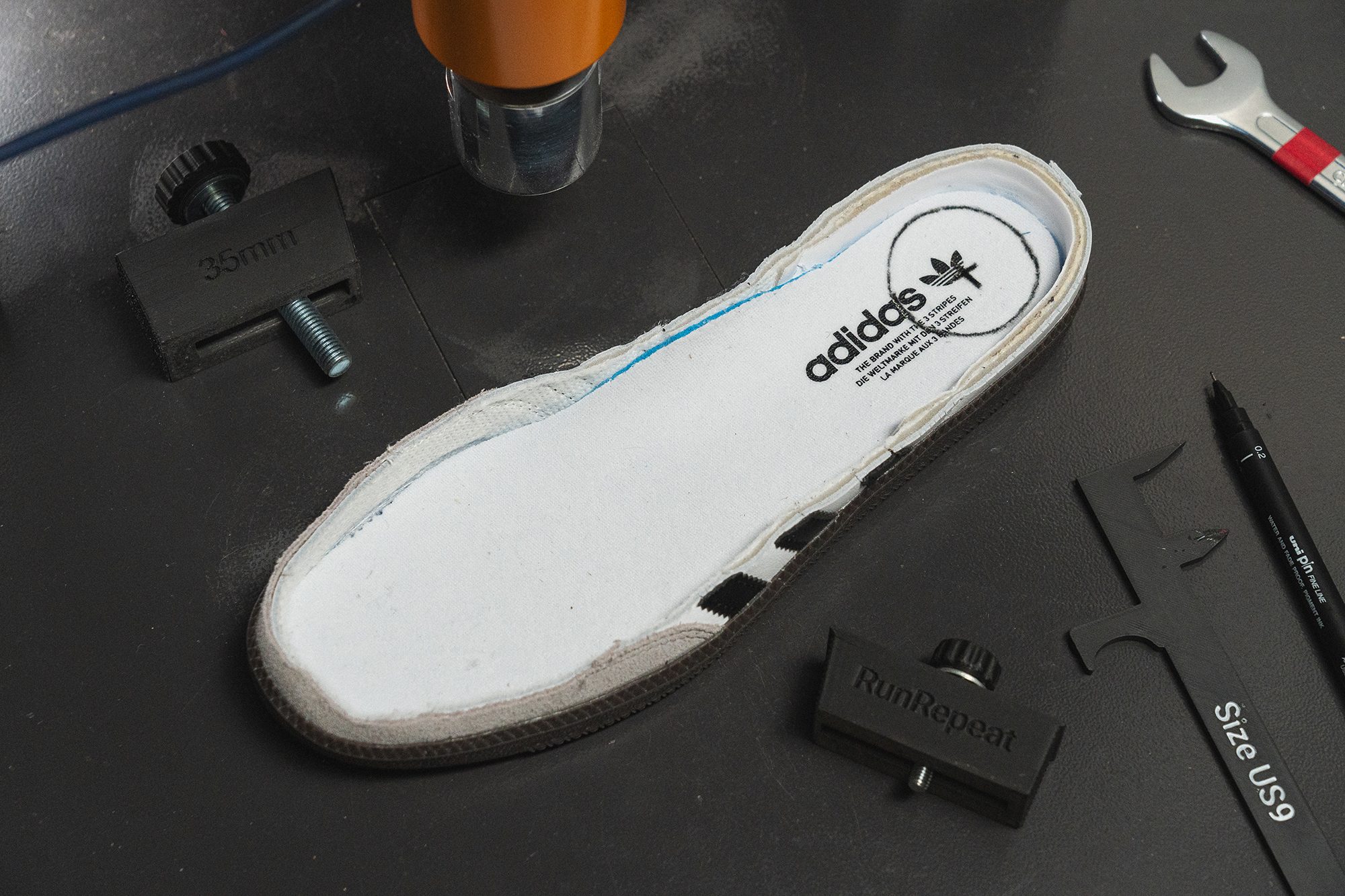
When hitting the hard surface over and over again, like concrete, asphalt, cobblestone, or tiles, we recommend sneakers that bring more comfort for your legs, and in this case, that means at least 100 SA.
Even though we recommend cushioned sneakers, you should decide how soft you want them to be.
To measure the softness, we use a shore A durometer and we stick its needle into the raw foam. For this, obviously, the sneaker has to be cut in half.
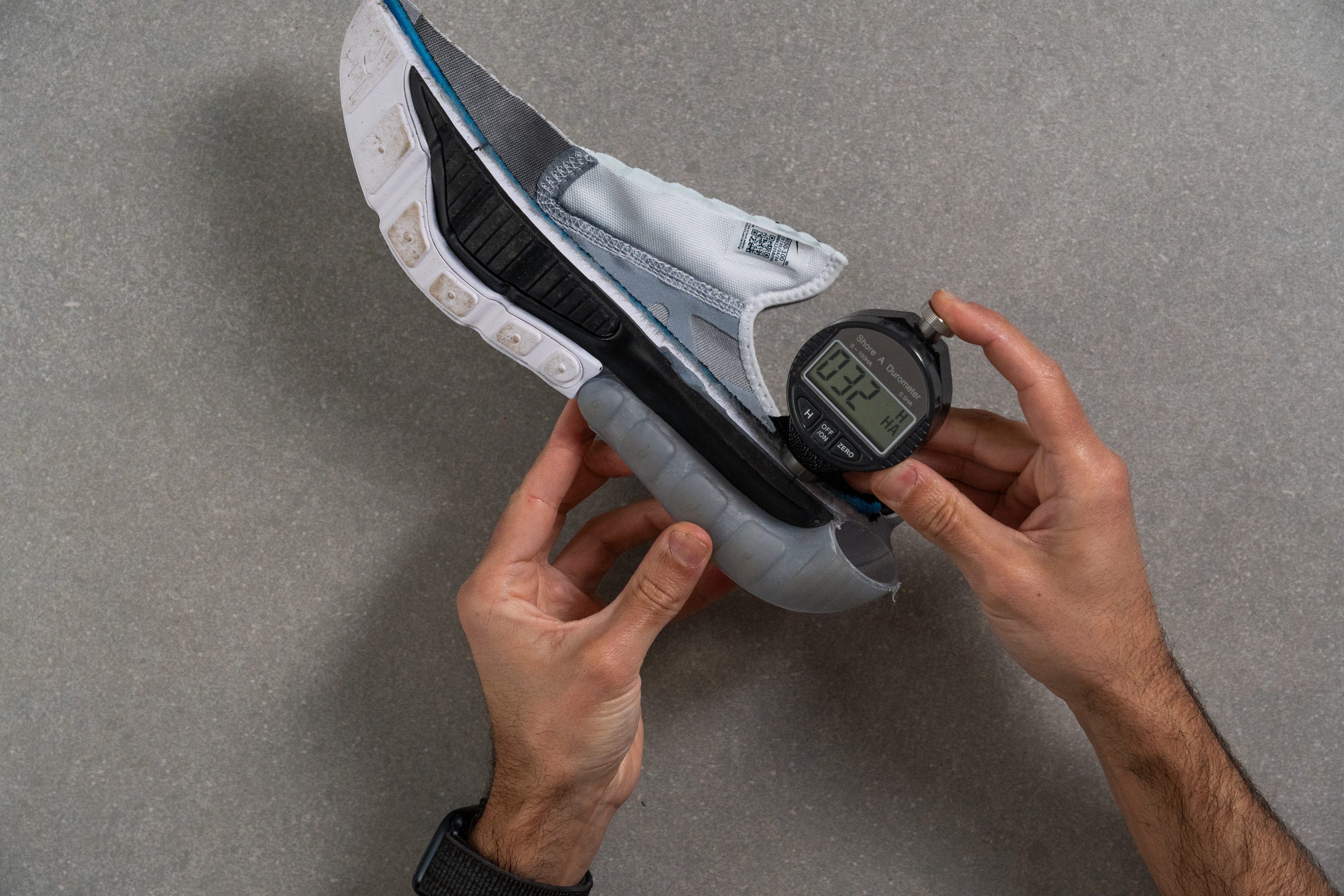
The importance of heel drop for medial tibial stress syndrome
The difference between the heel stack height and forefoot stack height is the heel drop or heel-to-toe drop. It basically tells us how steep the sneaker is (on the inside, it may look more or less steep on the outside, depending on the design).
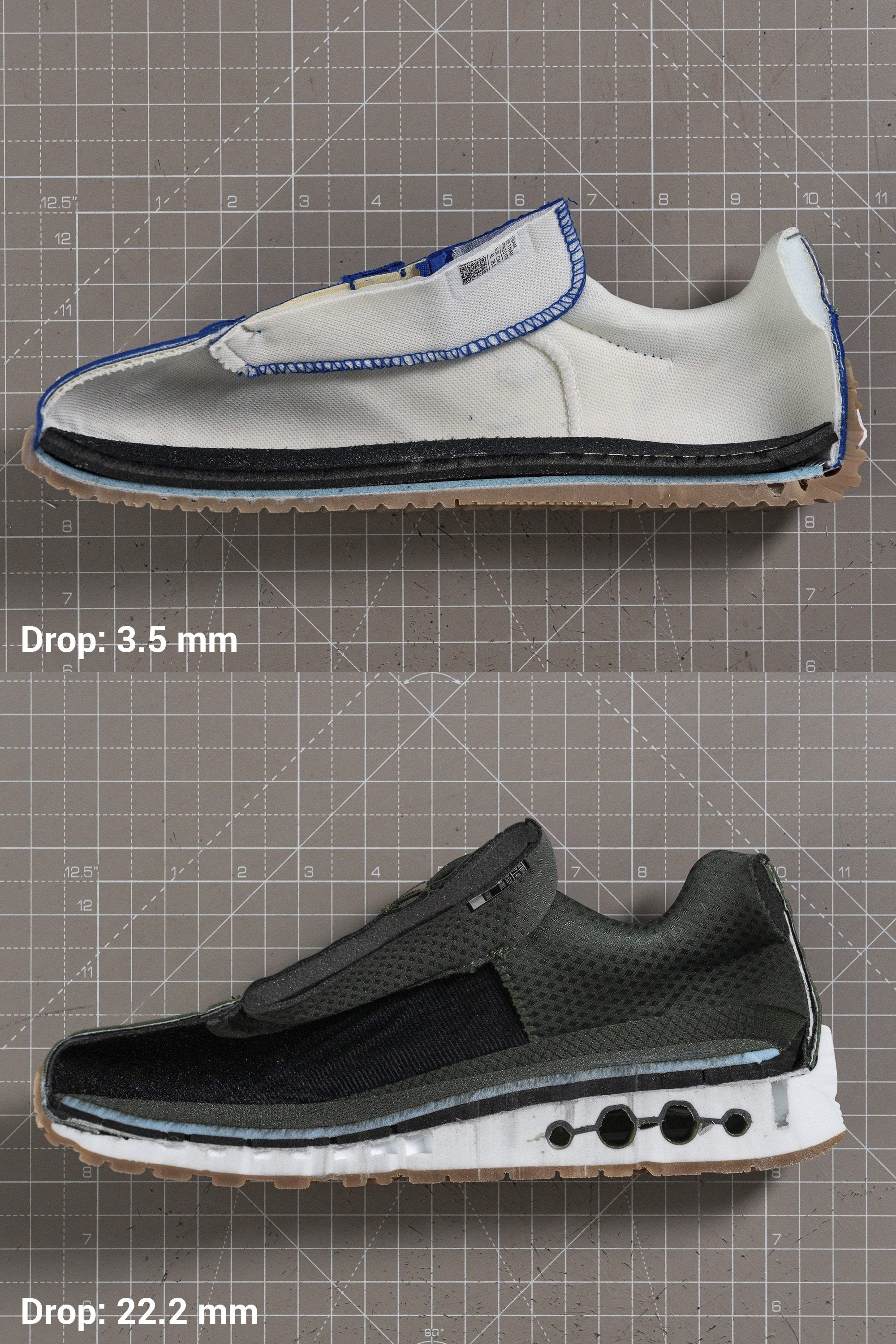
Now, what does this have to do with shin splints? Well, heel drop works like this: the lower it is, the more the lower leg muscles the sneaker utilizes. So, if the platform is flat, or we have a zero drop, the sneakers will make your foot muscles work a lot.
If, on the other hand, heel drop is 10mm or higher, it will make higher-leg muscles work the most, think hips, glutes, and so on. 10 mm is actually a non-written industry standard and, unless you’ve been specifically into minimalist or barefoot footwear, you may be used to a high drop.
Given that the shin bone is located between the knee and the ankle, the low drop (from 1 to 4 mm) would put even more stress on that area. Because of this, we recommend being mindful of the heel drop when dealing with shin splints.
Rigid sneakers are better for shin splints
When examining the sneakers and holding them in your hands, you can try to a) bend them and b) twist them. When we bend sneakers, we test longitudinal stiffness. When we twist them, we assess torsional rigidity.
When performing this assessment, we assing a 1-5 score to each sneaker, where 5/5 is the most rigid and 1/5 the least. The sneaker above scored 3/5
This sneaker scored 5/5 on our test, meaning it is very rigid
Torsional rigidity brings extra support and stability. We also recommend it for flat feet, overpronation, and painful Achilles tendons. For shin splints, we recommend sneakers that scored at least 3/5 on our torsional rigidity assessment.
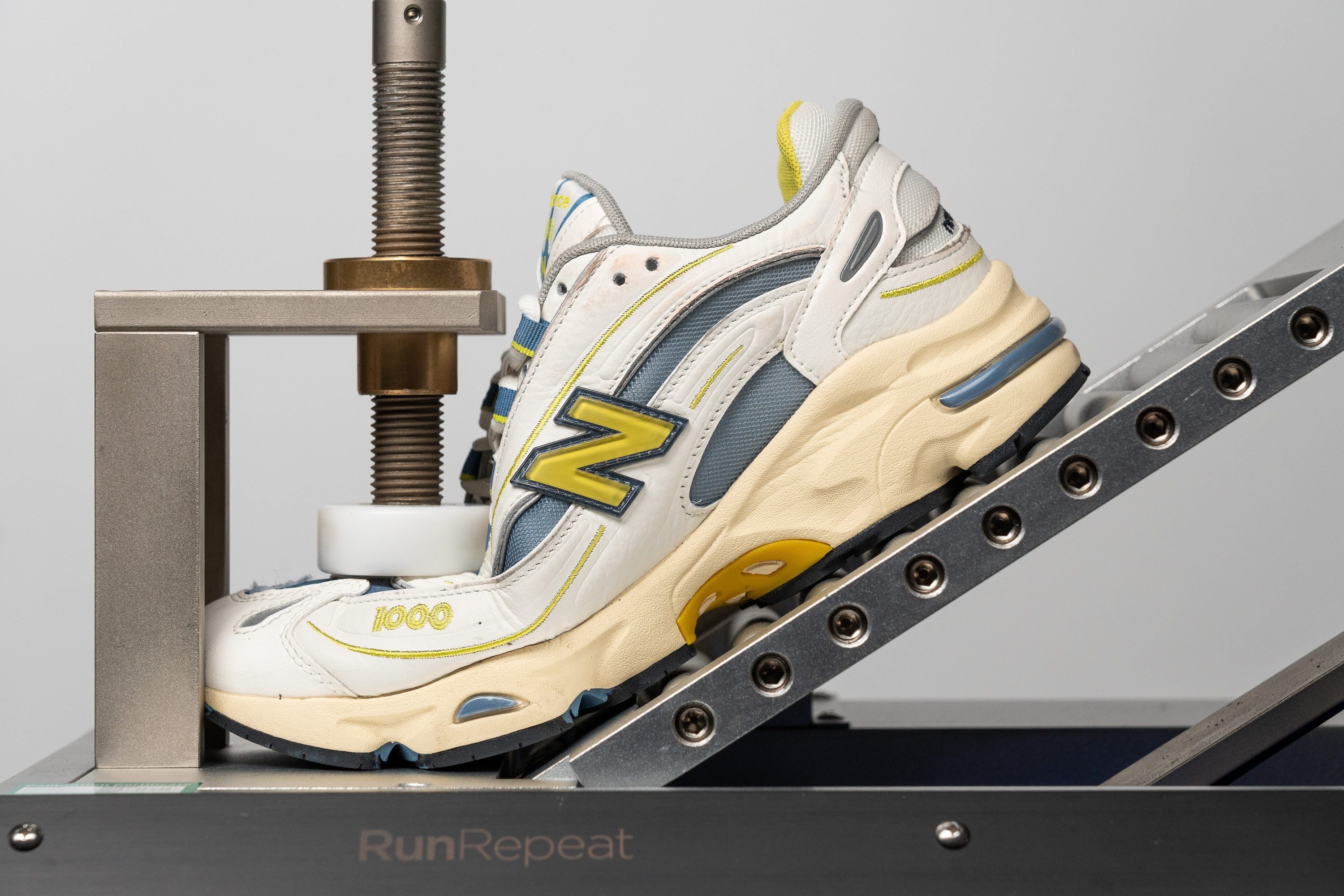
More flexible platforms feel more natural and are usually more comfortable. Stiffer ones, which require more force to bend to 30 degrees, are great for uneven terrain. This is a feature that shines bright in hiking shoes, for example.
Wide platform is the way to go!
Wide platforms are more stable; it is that simple. However, one might want to draw the line somewhere: when the sneaker becomes chunky and/or too heavy for them.
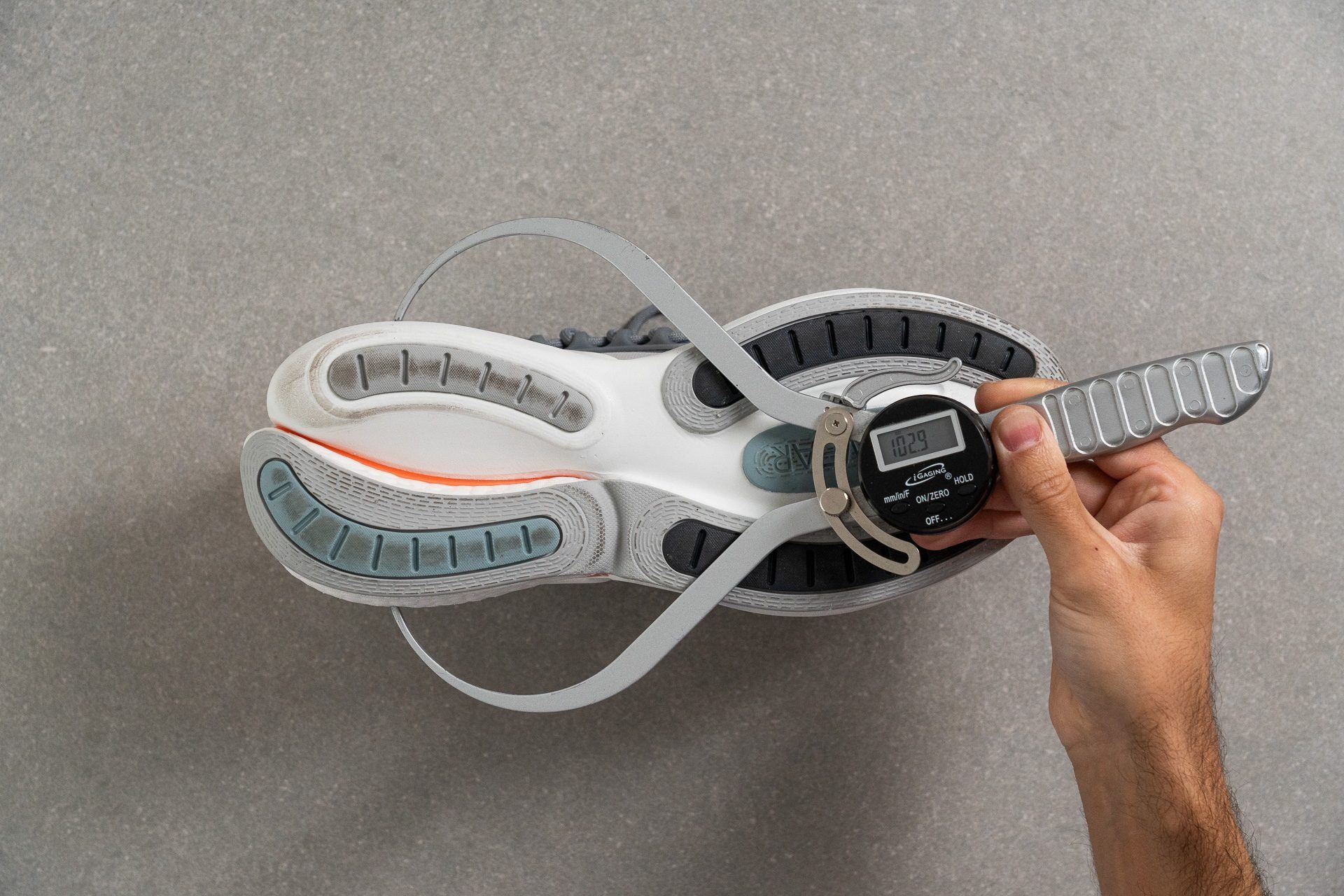
This is more like a precaution. Once the sneakers get too high (heel stack height), they can also become unstable if the platform is narrow.
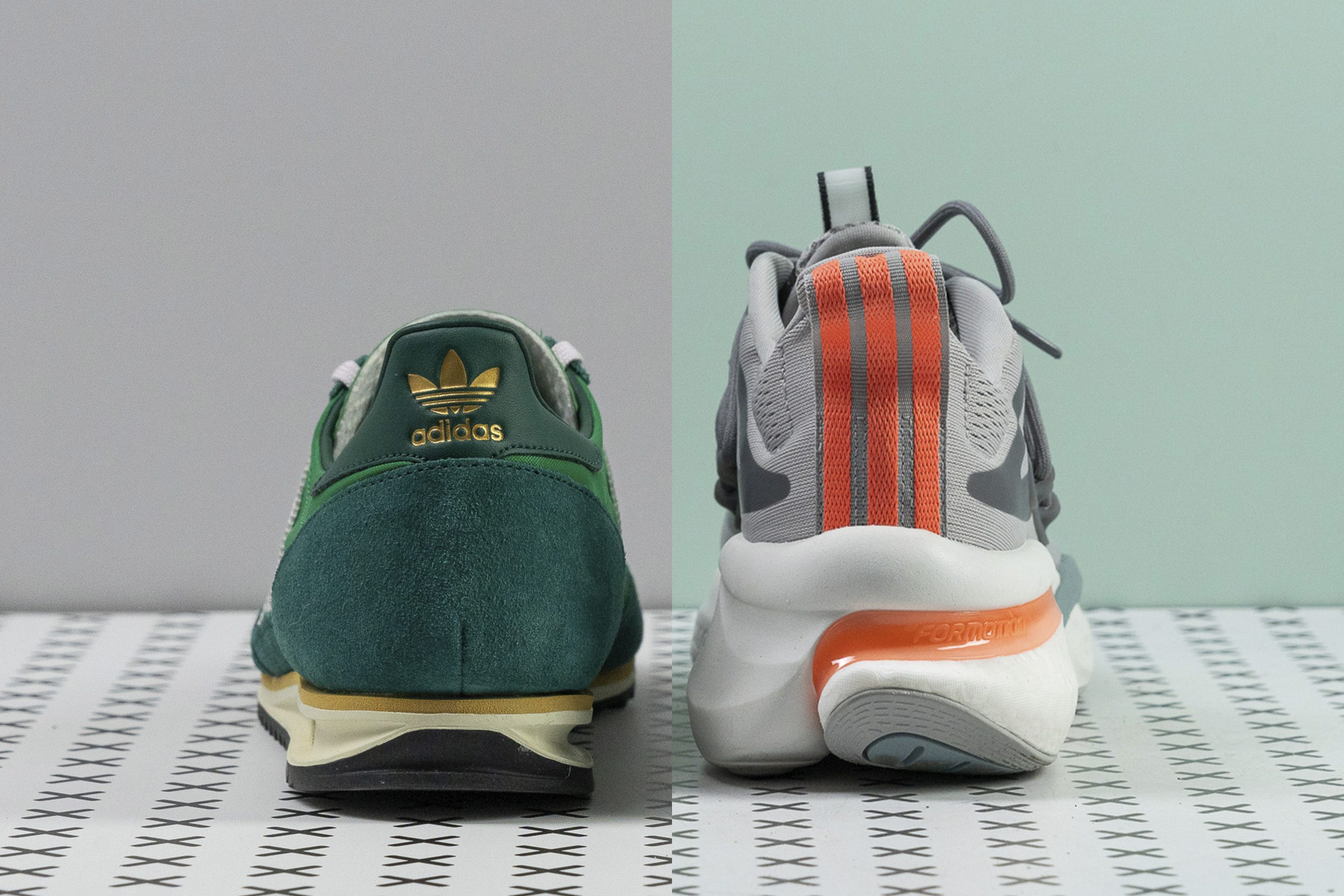
However, rest assured, wide does not have to mean chunky. Our lower limit, 90 mm, is not that wide, actually! Many sneakers fulfill this criterion.
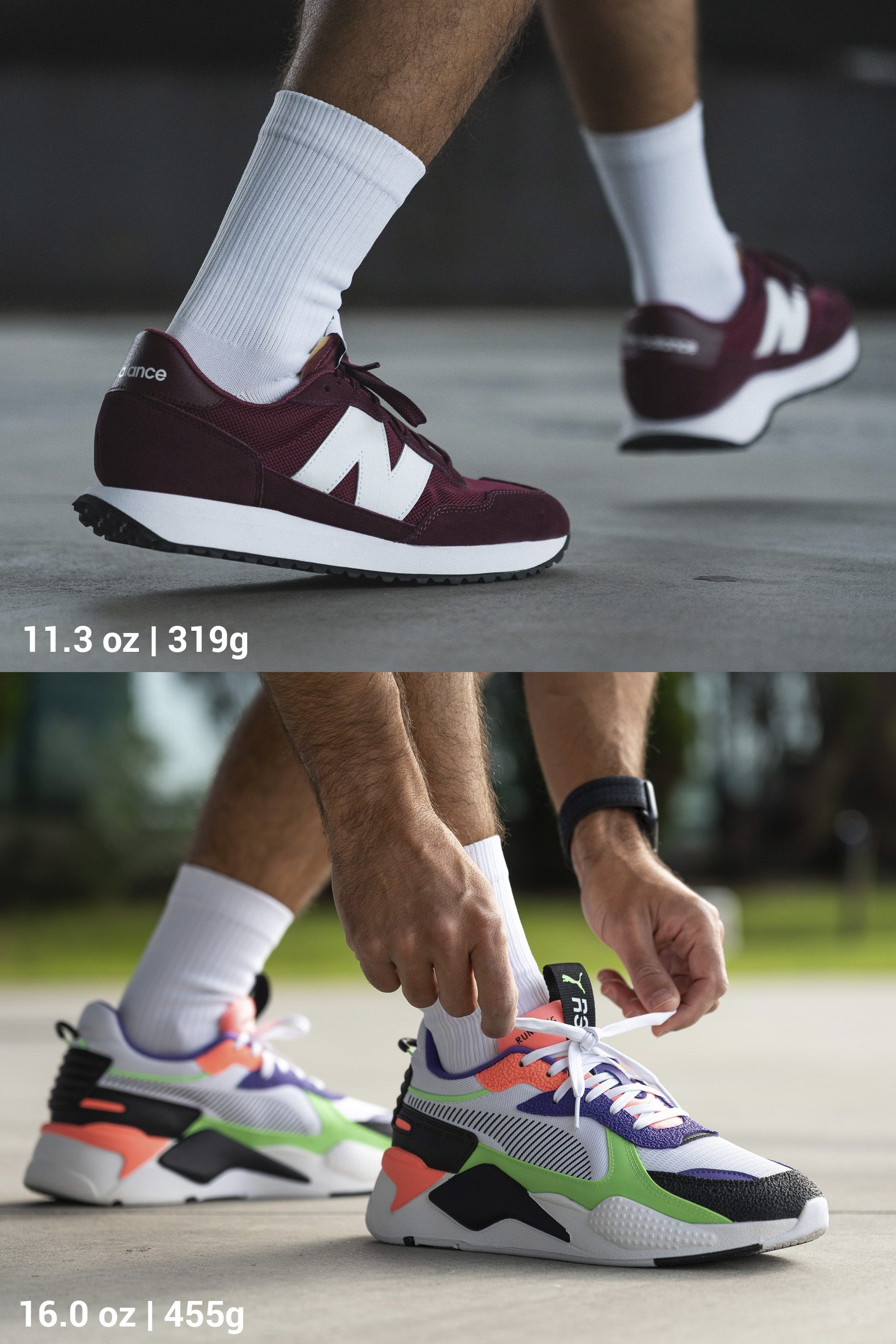
Another thing to pay attention to is the weight. This is not an issue if you’re using sneakers for very short distances or just hanging out (and looking good). If, on the other hand, you plan to walk a lot in these sneakers, maybe even travel, and explore different areas, heavy sneakers may bother you as they will not “disappear on your feet.”
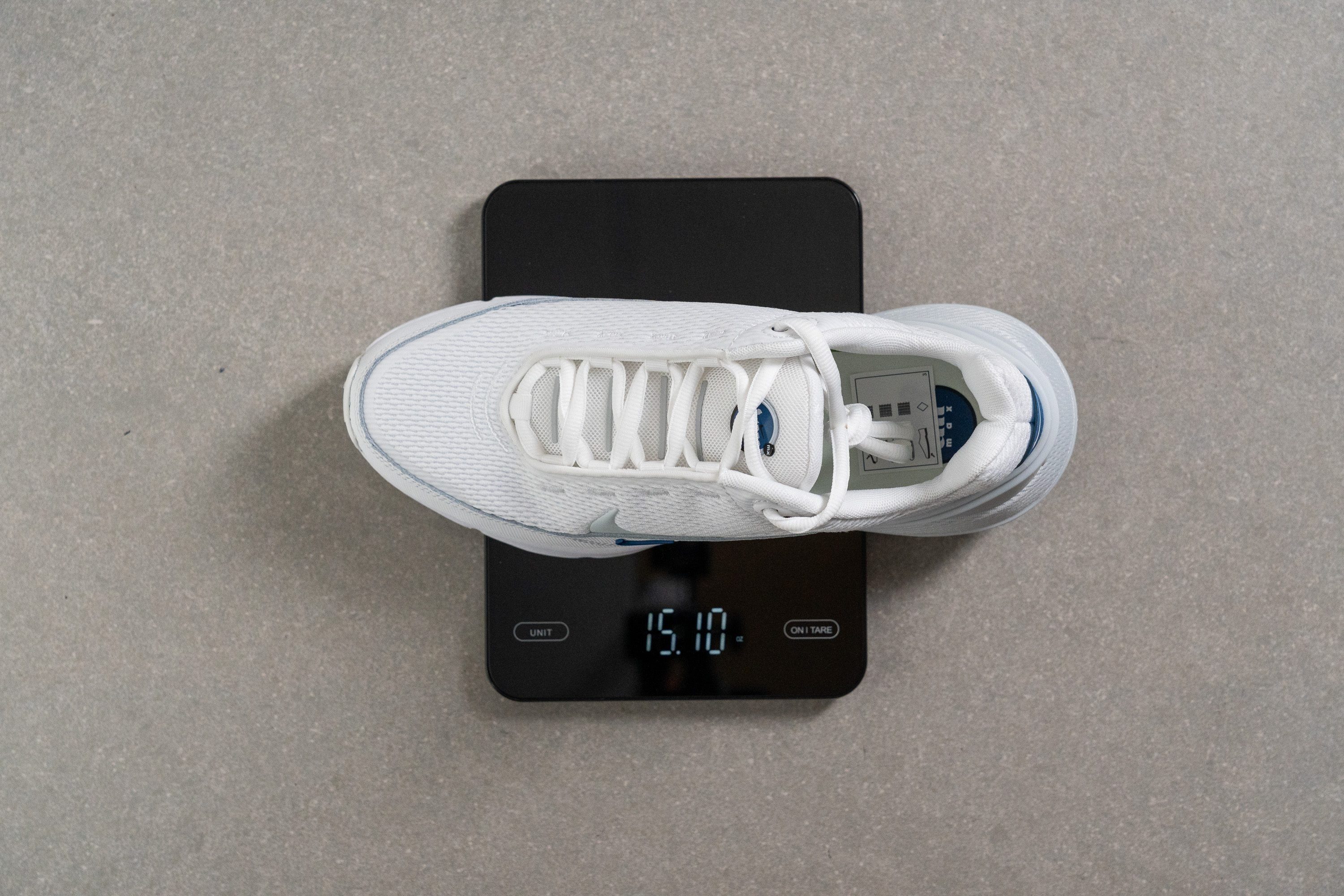
Breathability of sneakers for shin splints
Breathability depends on the material used to make the sneakers, the toebox specifically, and on the design. Some sneakers don’t need ventilation holes because the material is very loose and, by default, allows the air to pass through, while others, for example, those made of leather, need ventilation holes poked through.
To test the breathability of sneakers, we direct the smoke from our smoke machine into the toebox and then watch how much of it comes out and how fast. Based on this, we assign a 1-5 breathability rating to each sneaker, 1/5 being the least breathable and 5/5 the most
While the smoke test is enough on its own to tell us how breathable the sneaker is, we don’t stop there. We want to know why some sneakers scored 2/5 or 5/5 if it is not visible to the naked eye. To do this, we use a microscope.
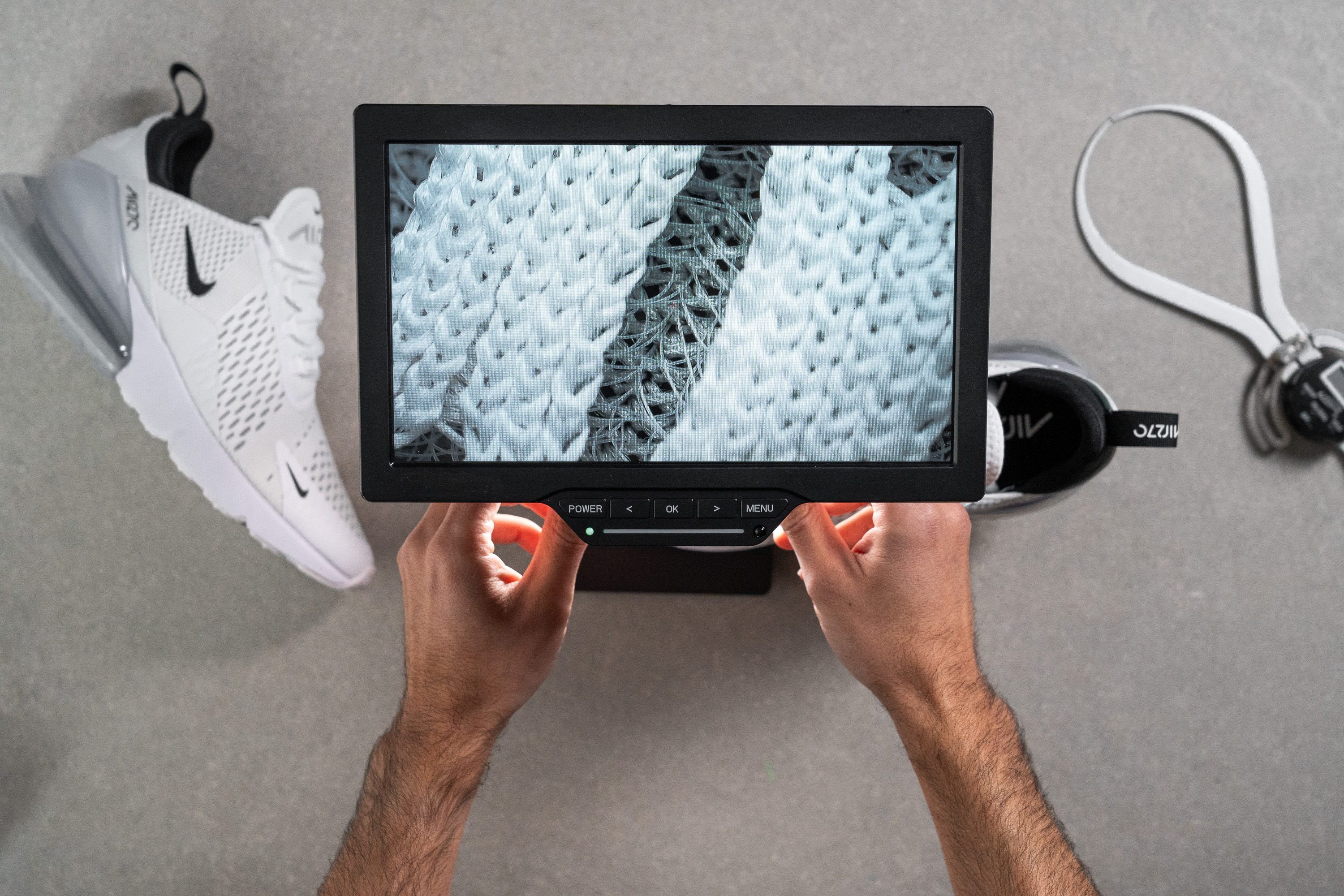
Looking at the uppers under the microscope allows us to see all the possible details. Some threads are loose, others are packed. Waterproof materials are insanely dense, and basically no air comes through.
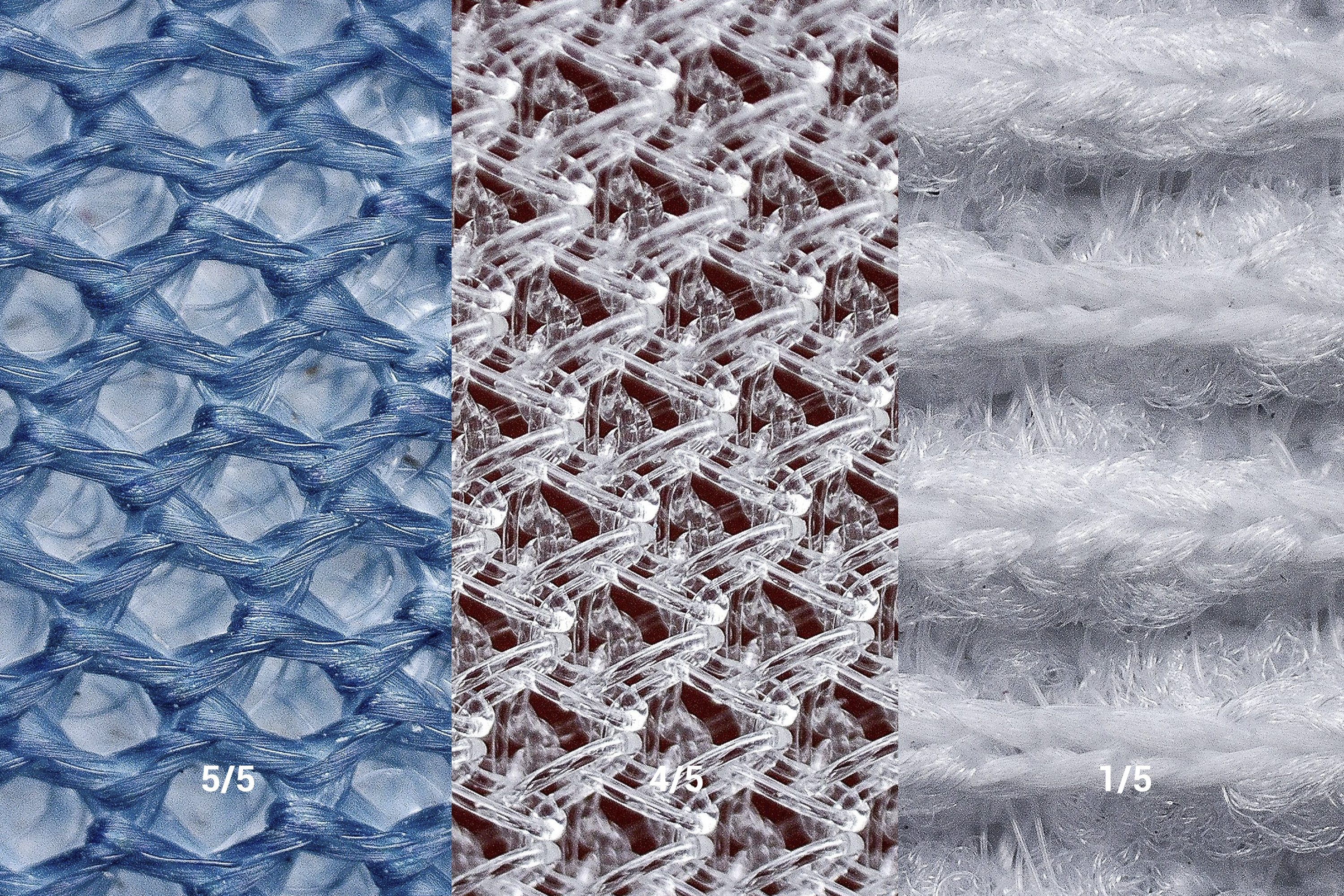
The most interesting part is figuring out whether the vent holes are fake or real. Yes, some brands make decorative ventilation holes! Go fig.
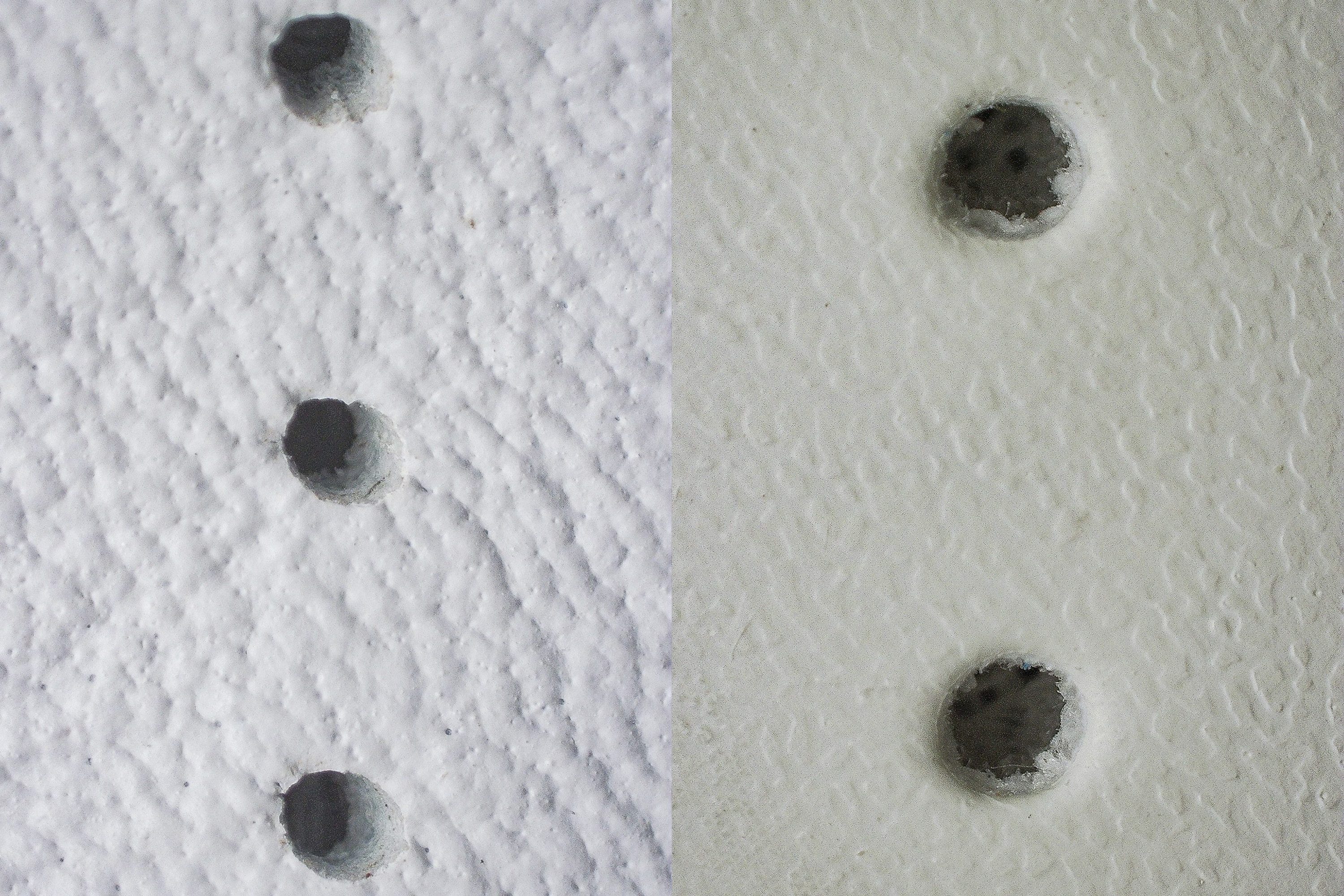
Durability of sneakers for shin splints
When buying new sneakers, most of us want them to last as long as possible. Especially if we plan to abuse them daily, all around the town. For RunRepeat to deliver, we had to test the durability of 3 different sneaker parts: the toebox, the heel padding, and the outsole.
We press a dremel against the toebox during our standardized test. Standardized means we always use the same pressure, RPMs, and time duration. Based on the damage, we assign a 1-5 durability score, where 1/5 is the least durable. The toebox in the video got 1/5
Sneaker toeboxes are made from different materials and real leather and suede are, of course, more durable than other materials. Knit is usually (not a rule) the least durable.
We use the same approach to test the heel padding area and assign a 1-5 durability score to each sneaker. The one in the video got a 1/5 rating
Depending on whether you use a shoe horn or not, the shape of your heel bone, and overall material quality, the heel padding area may last longer for you (5/5 for the most durable) or shorter (1/5 for the least durable).
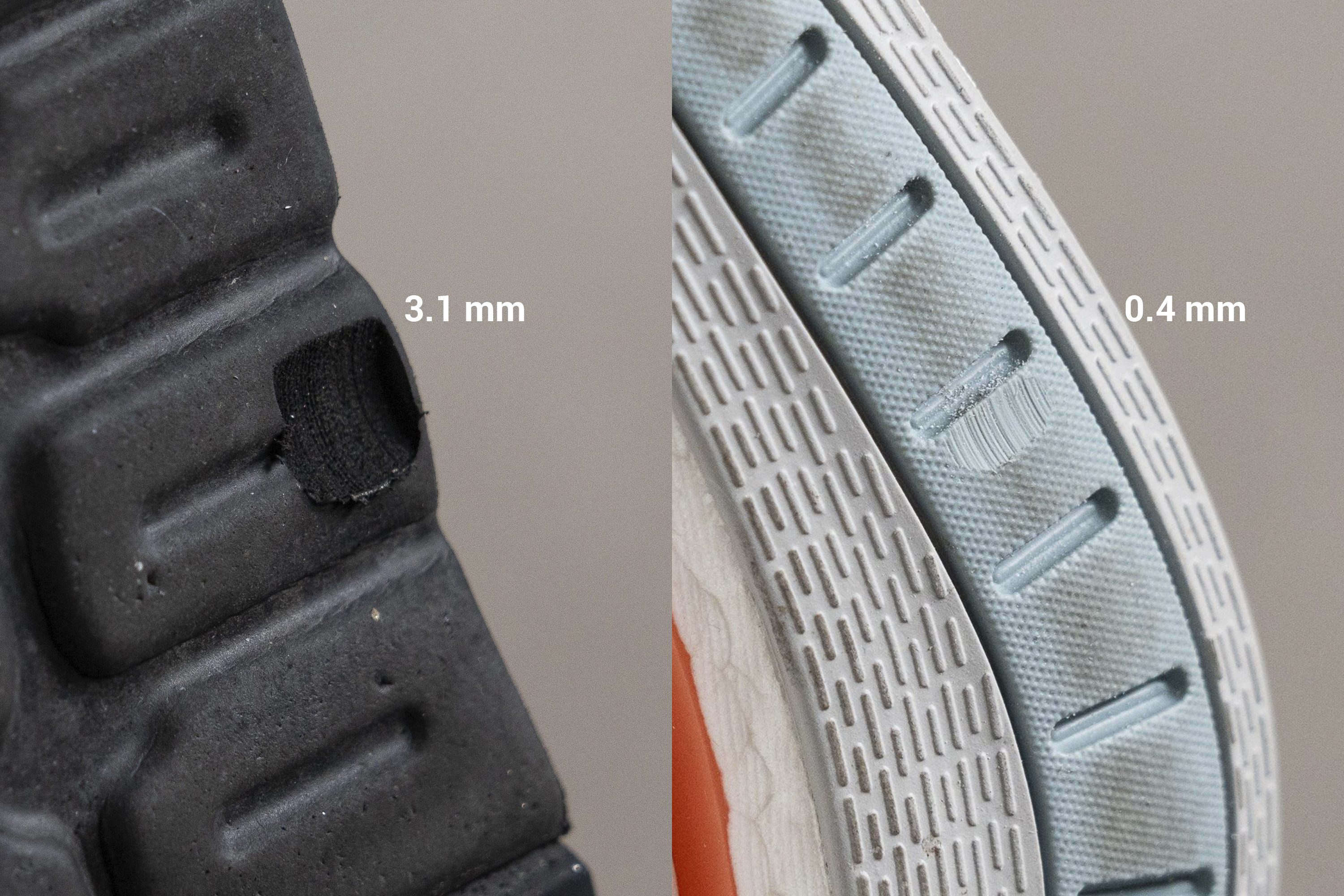
Budget-friendly sneakers for tibial stress syndrome
Maybe everything above sounds too fancy to you. Fortunately, most of the features we mentioned are very common! And they do not include any expensive technologies. From the top of the head, waterproof membranes or stabilizing technologies for overpronation or flat feet would be more expensive.
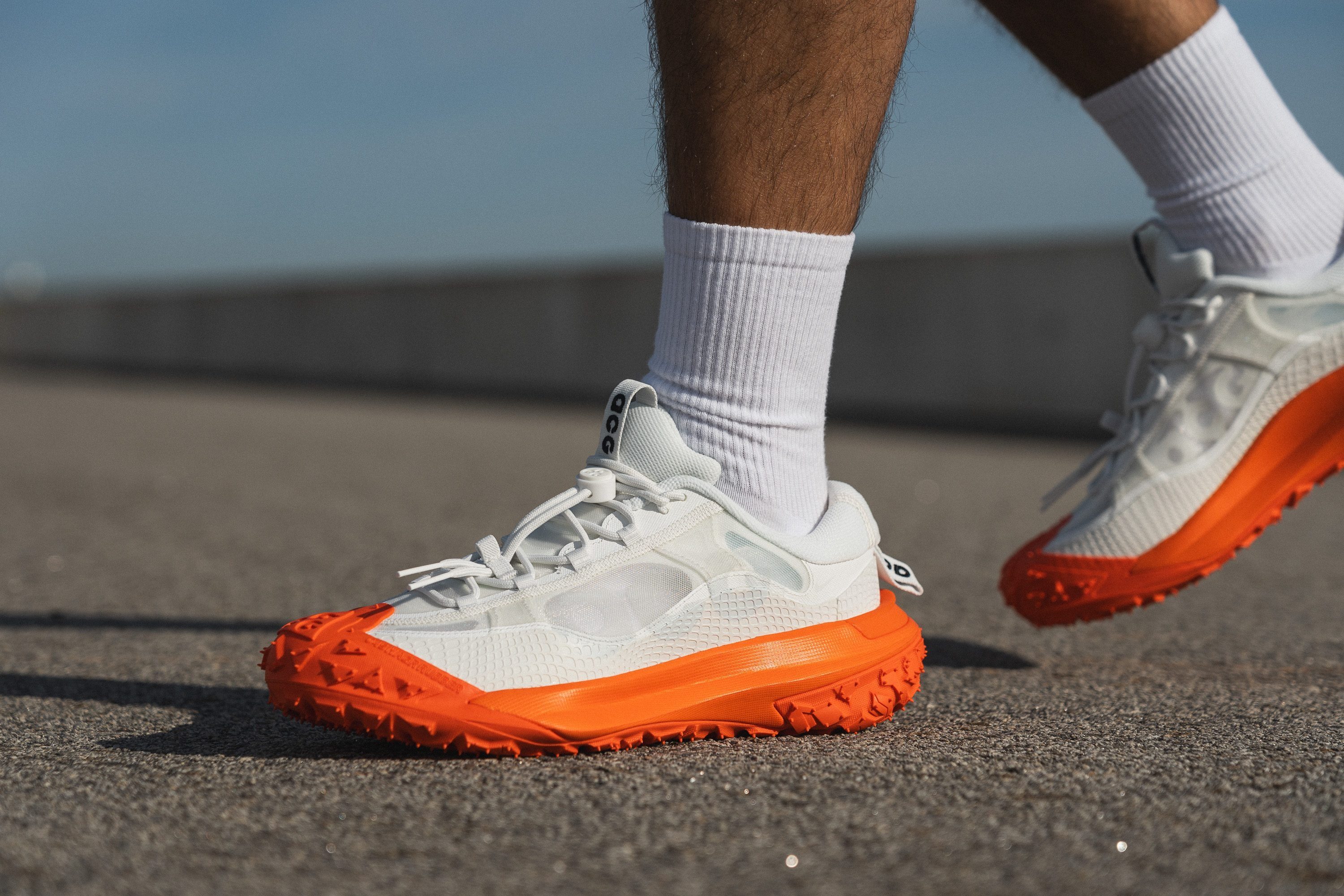
The table above lists sneakers for shin splints that were the cheapest when they were released (that’s why it says MSRP = manufacturer’s suggested retail price). However, sneakers are discounted all the time! If you’re looking for a good deal, we suggest you visit our sneakers deal page or subscribe to our price alerts. We will email you once the price drops.

